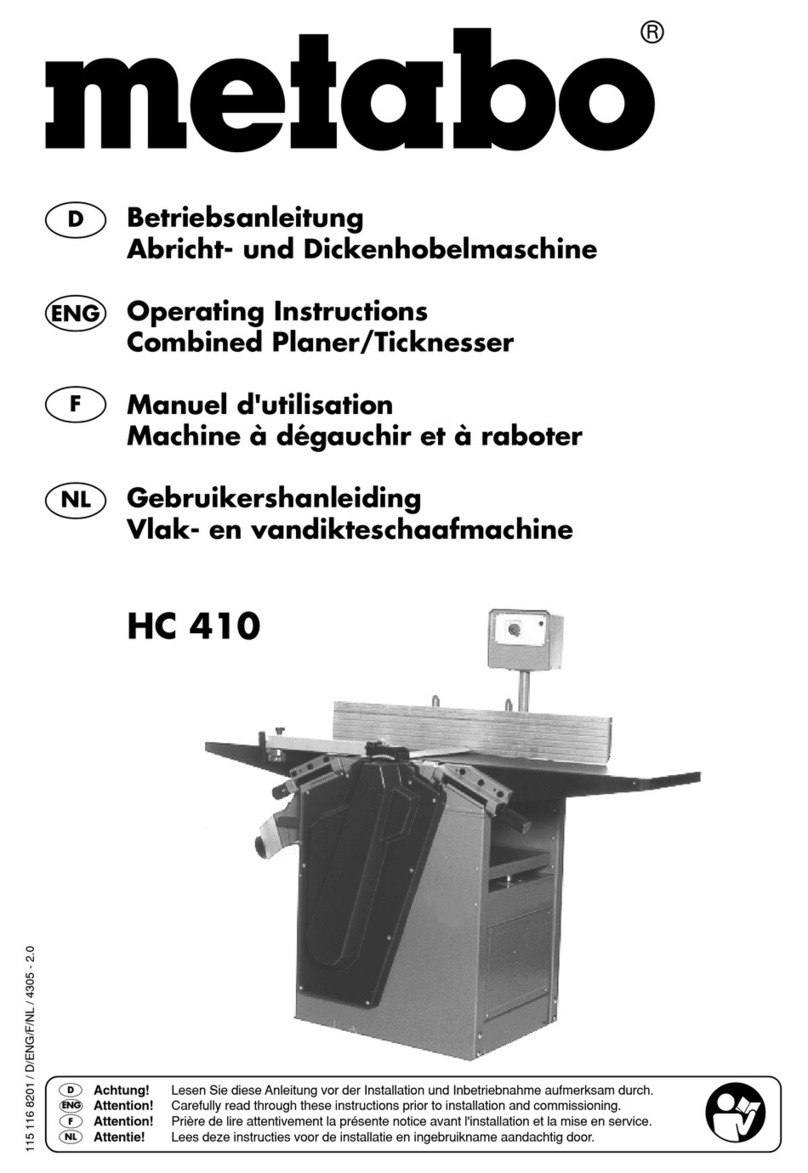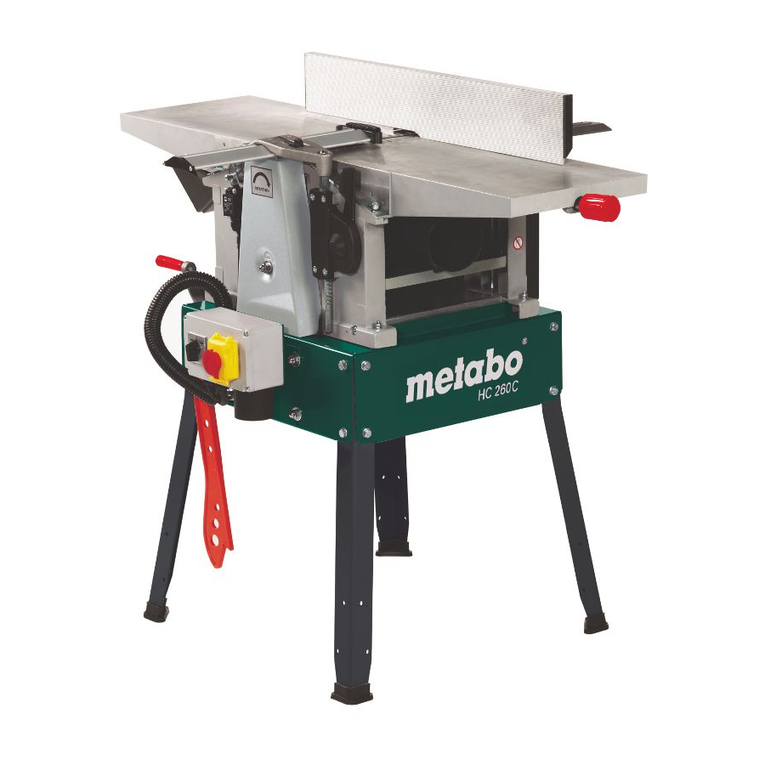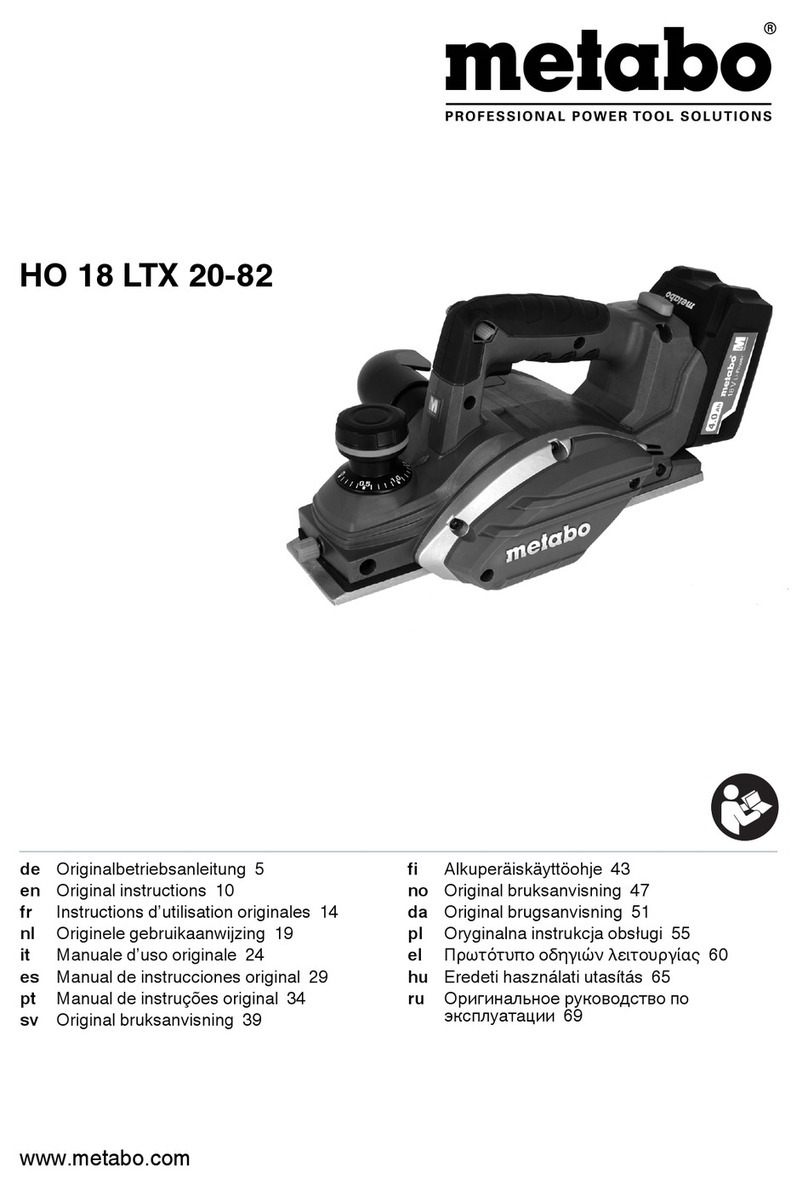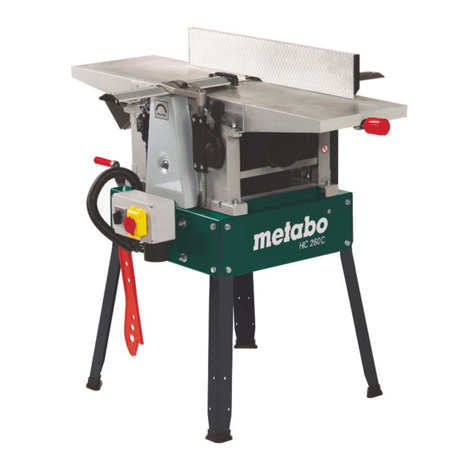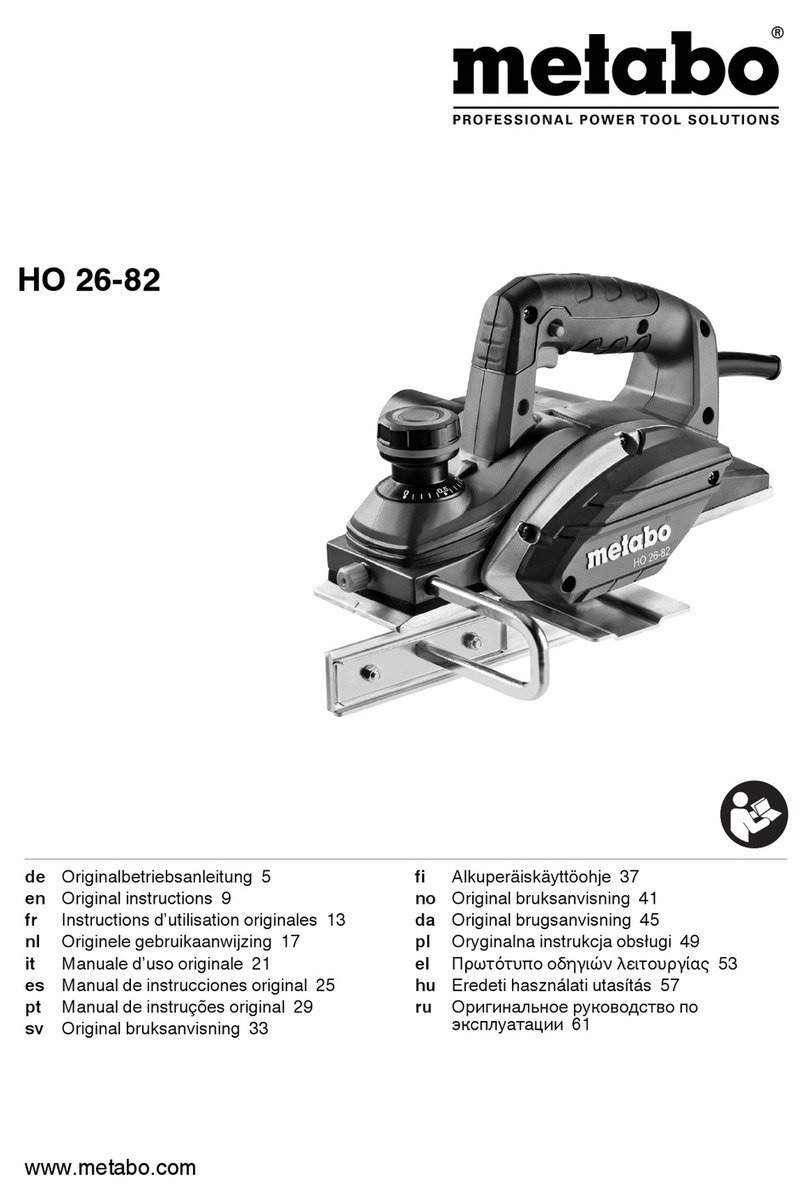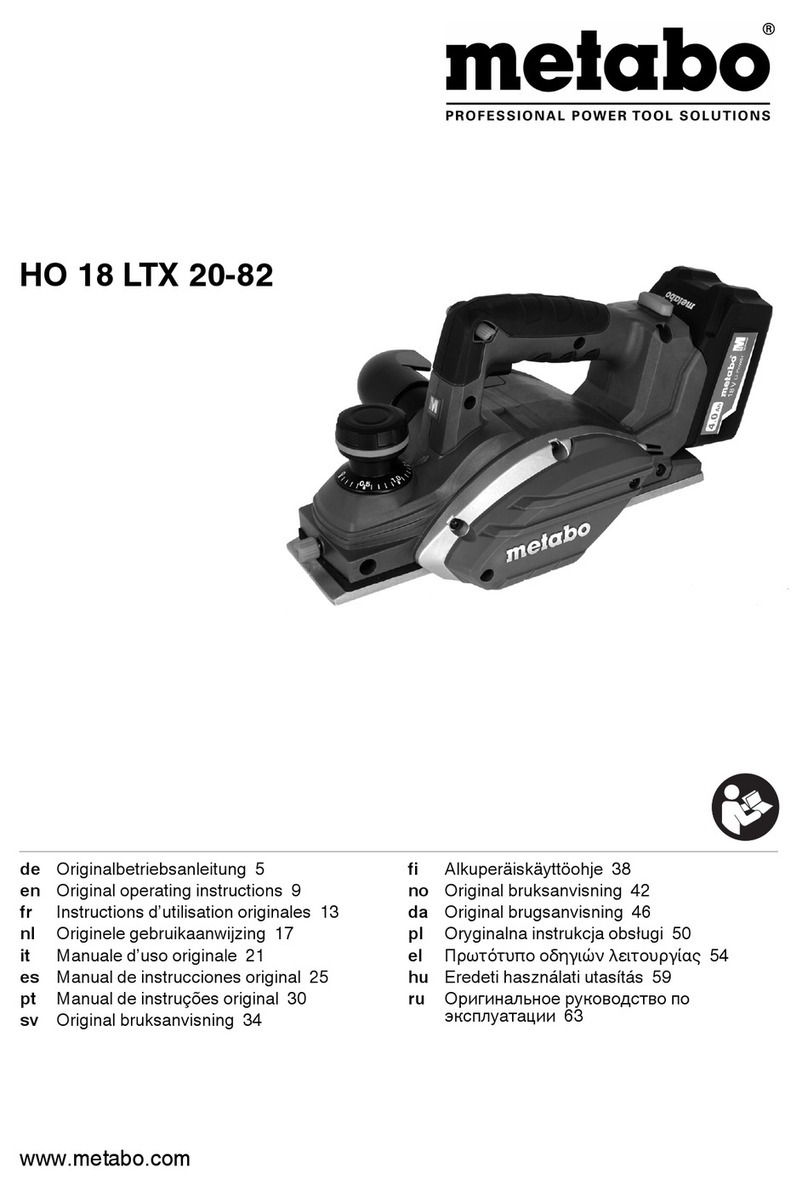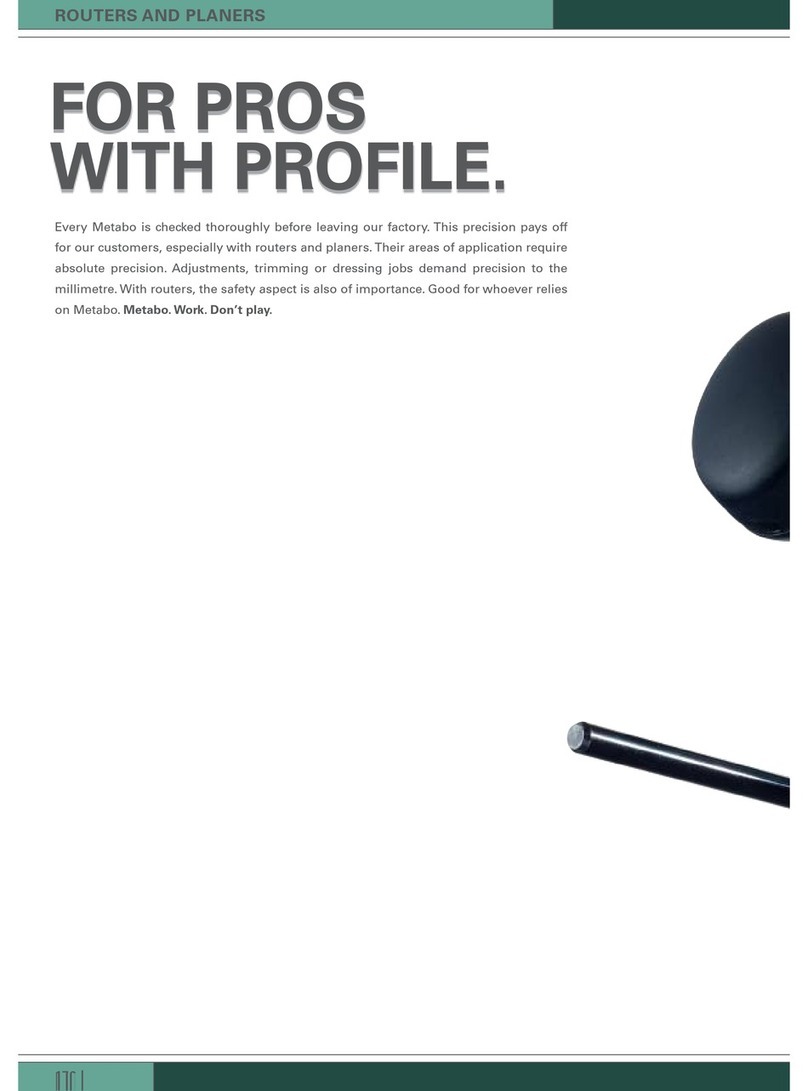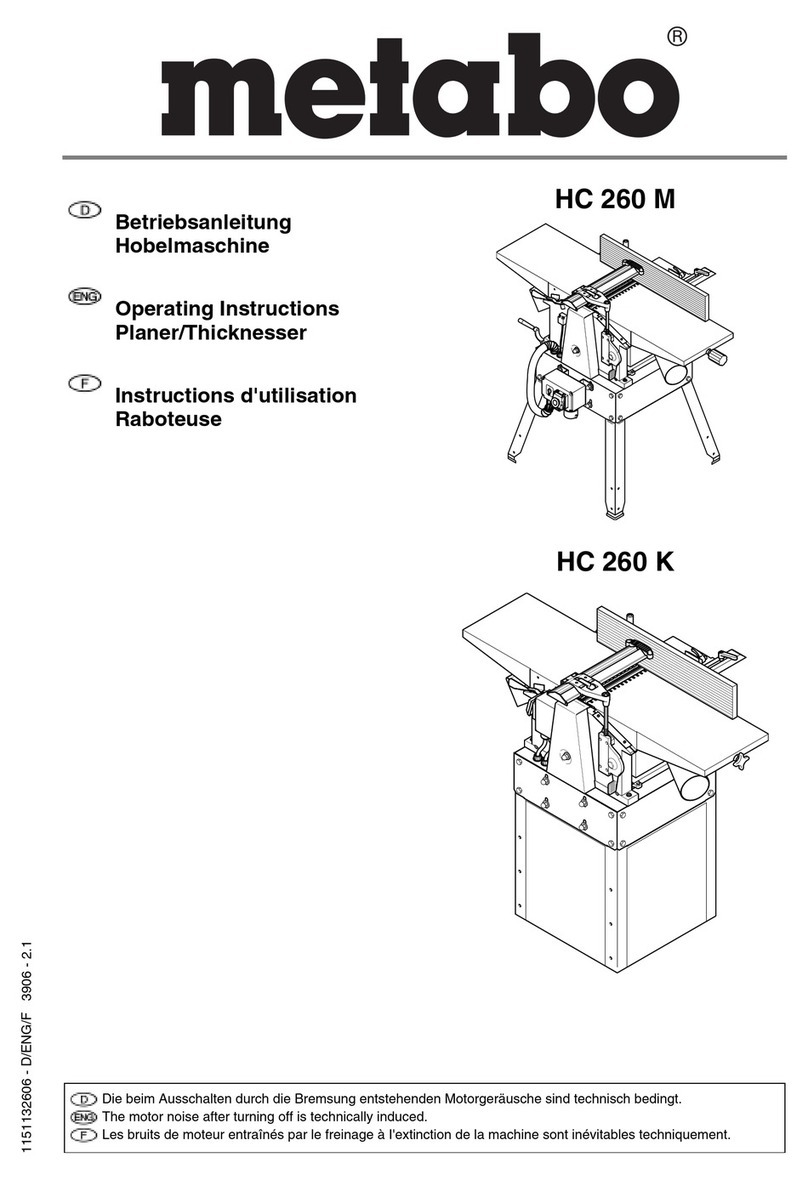
ENGLISHen
10
Original instructions
We, being solely responsible, hereby declare that
these planers, identified by type and serial number
*1), meet all relevant requirements of directives *2)
and standards *3). Technical documents for *4) -
see page 3.
For UK only:
We as manufacturer and authorized person to
compile the technical file, see *4) on page 3,
hereby declare under sole responsibility that these
planers, identified by type and serial number *1) on
page 3, fulfill all relevant provisions of following UK
Regulations S.I. 2016/1091, S.I. 2008/1597, S.I.
2012/3032 and Designated Standards EN
62841:2015, EN 62841-2-14:2015, EN IEC
63000:2018.
The planer is ideal for planing and rabetting of wood
and for chamfering of the edges of wood and wood-
like materials.
The user bears sole responsibility for any damage
caused by inappropriate use.
Generally accepted accident prevention
regulations and the enclosed safety information
must be observed.
For your own protection and for the
protection of your electrical tool, pay
attention to all parts of the text that are
marked with this symbol!
WARNING – Reading the operating instruc-
tions will reduce the risk of injury.
WARNING – Read all safety warnings,
instructions, illustrations and
specifications provided with this power tool.
Failure to follow all instructions listed below may
result in electric shock, fire and/or serious injury.
Save all warnings and instructions for future
reference. Pass on your electrical tool only
together with these documents.
Wait for the cutter to stop before setting the
tool down. An exposed rotating cutter may engage
the surface leading to possible loss of control and
serious injury.
Use clamps or another practical way to secure
and support the workpiece to a stable platform.
Holding the workpiece by your hand or against the
body leaves it unstable and may lead to loss of
control.
Check the workpiece for foreign bodies. Remove
nails or other metal parts from the workpiece to be
processed.
Guide the tool against the workpiece only when it is
switched on. The planer’s sole must make secure
contact with the workpiece. Otherwise there is a risk
of rebound from jamming the tool in the workpiece.
Always get a secure grip of the machine when
switching on.
Always guide the machine with both hands on the
handles (2) and (6). Do not operate the machine in
a holder.
Danger of injury from sharp edges of the planer
knives.
Pay attention to the rotating cutter. Keep in mind
that the motor and thus also the cutter continue to
run after switching off the tool.
Do not put your body and hands near the cutter
drum.
Do not reach into the chip ejection mechanism.
Reverse/replace blunt planer knifes in due time and
always in pairs: worn edges of the planer knifes
increase the risk of kickback and reduce the quality
of the planing work. Sharp planer knifes provide
good cutting output and reduce load on the
machine.
Put the planer down onto the stand (11). If the stand
is defective, have it repaired.
If the machine is defective, remove the battery pack
from the machine.
Remove the battery pack from the machine before
making any adjustments, changing tools,
maintaining or cleaning.
Protect battery packs from water and
moisture!
Do not expose battery packs to fire!
Do not use faulty or deformed battery packs!
Do not open battery packs!
Do not touch or short circuit battery pack contacts!
A slightly acidic, flammable fluid may leak
from defective Li-ion battery packs!
If battery fluid leaks out and comes into
contact with your skin, rinse immediately
with plenty of water. If battery fluid leaks out
and comes into contact with your eyes, wash them
with clean water and seek medical attention
immediately!
Transport of li-ion battery packs:
The shipping of li-ion battery pack is subject to laws
related to the carriage of hazardous goods (UN
3480 and UN 3481). Inform yourself of the currently
valid specifications when shipping li-ion battery
packs. If necessary, consult your freight forwarder.
Certified packaging is available from Metabo.
Only send the battery pack if the housing is intact
and no fluid is leaking. Remove the battery pack
1. Declaration of Conformity
2. Specified Conditions of Use
3. General Safety Information
4. Special Safety Instructions
